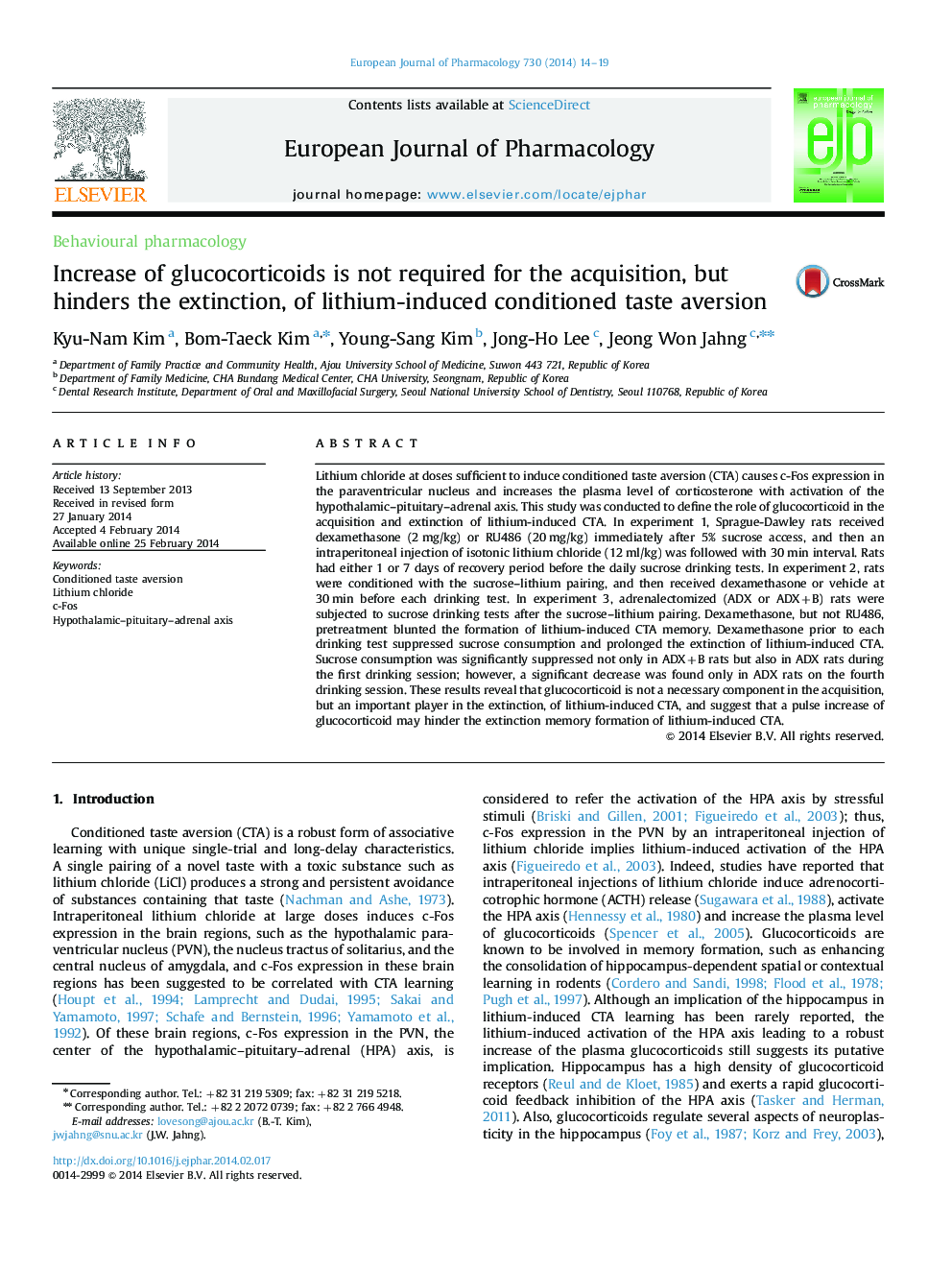| Article ID | Journal | Published Year | Pages | File Type |
|---|---|---|---|---|
| 5828057 | European Journal of Pharmacology | 2014 | 6 Pages |
Abstract
Lithium chloride at doses sufficient to induce conditioned taste aversion (CTA) causes c-Fos expression in the paraventricular nucleus and increases the plasma level of corticosterone with activation of the hypothalamic-pituitary-adrenal axis. This study was conducted to define the role of glucocorticoid in the acquisition and extinction of lithium-induced CTA. In experiment 1, Sprague-Dawley rats received dexamethasone (2Â mg/kg) or RU486 (20Â mg/kg) immediately after 5% sucrose access, and then an intraperitoneal injection of isotonic lithium chloride (12Â ml/kg) was followed with 30Â min interval. Rats had either 1 or 7 days of recovery period before the daily sucrose drinking tests. In experiment 2, rats were conditioned with the sucrose-lithium pairing, and then received dexamethasone or vehicle at 30Â min before each drinking test. In experiment 3, adrenalectomized (ADX or ADX+B) rats were subjected to sucrose drinking tests after the sucrose-lithium pairing. Dexamethasone, but not RU486, pretreatment blunted the formation of lithium-induced CTA memory. Dexamethasone prior to each drinking test suppressed sucrose consumption and prolonged the extinction of lithium-induced CTA. Sucrose consumption was significantly suppressed not only in ADX+B rats but also in ADX rats during the first drinking session; however, a significant decrease was found only in ADX rats on the fourth drinking session. These results reveal that glucocorticoid is not a necessary component in the acquisition, but an important player in the extinction, of lithium-induced CTA, and suggest that a pulse increase of glucocorticoid may hinder the extinction memory formation of lithium-induced CTA.
Related Topics
Life Sciences
Neuroscience
Cellular and Molecular Neuroscience
Authors
Kyu-Nam Kim, Bom-Taeck Kim, Young-Sang Kim, Jong-Ho Lee, Jeong Won Jahng,
